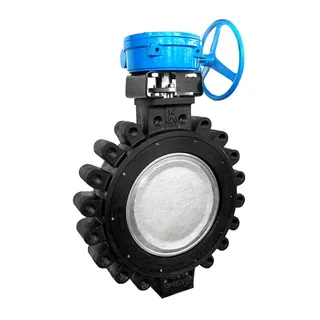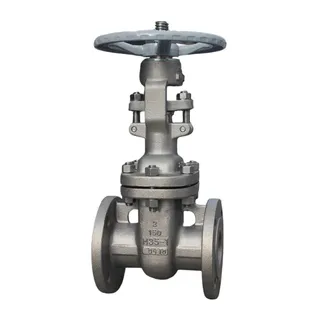In the industrial field, valves serve as critical components for controlling fluid flow, and their quality is directly related to the safe operation of entire systems. Non-Destructive Testing (NDT) is an important method for ensuring valve quality. Through various physical or chemical methods, NDT can comprehensively detect internal and surface defects in valve materials or work pieces without damaging their integrity. This effectively prevents valve failures caused by material defects and ensures smooth industrial production.
In industrial production, ensuring the quality of key components such as valves is essential, and NDT technologies are the key means to achieve this. There are many types of NDT technologies, each with its own principles and application scenarios. The following sections introduce these NDT technologies and their working principles in detail, helping readers better understand their applications in industry.
Ultrasonic testing is a method that uses the propagation characteristics of ultrasonic waves in materials to detect internal defects in valves. When ultrasonic waves propagate through a material, they produce reflected waves when encountering defects. By measuring the time and intensity of these reflected signals, the location, size, and nature of defects can be determined.
Ultrasonic testing has the advantages of fast detection speed and wide applicability. It can effectively identify cracks, porosity, laminations, and other internal issues. However, for materials with significant density variations, detection accuracy may be affected. For example, when inspecting certain alloy materials, uneven internal composition may result in density differences, causing refraction and scattering of ultrasonic waves during propagation, thereby affecting defect evaluation.
Radiographic testing uses X-rays, γ-rays, or neutron rays to penetrate valve materials and records the changes in radiation intensity after passing through the object. When radiation passes through a valve, internal defects absorb and scatter the rays, causing observable intensity changes. By analyzing these changes, volumetric internal defects such as porosity, slag inclusion, or shrinkage cavities can be clearly identified.
RT is important for inspecting metal castings and welds, as it can visually display defect shapes and locations. However, its capability to detect fine cracks or lack-of-fusion defects is relatively weak because these types of defects have small areas and thus little effect on radiation absorption and scattering.
Magnetic particle testing is a method based on the principle of magnetic flux leakage. When a valve is subjected to a magnetic field, surface or near-surface defects—such as cracks or bubbles—can distort the magnetic flux lines, generating a leakage field. When magnetic particles are applied to the valve surface, they are attracted to these leakage areas, forming clearly visible indications that reveal surface discontinuities.
MT is highly effective for detecting surface defects in the valve body and can quickly and accurately identify surface cracks. However, it is not suitable for identifying deeper defects because the magnetic leakage field generated by such defects is weak and cannot attract magnetic particles effectively.
Liquid penetrant testing uses capillary action. Penetrant liquid is applied to the valve surface, seeping into open surface defects. After a period of time, a developer is used to draw the penetrant back to the surface, displaying the defect.
This method is mainly suitable for detecting open surface defects such as cracks. However, for valves with rough surfaces or contamination such as oil, the penetration effect may be affected, reducing detection accuracy.
Eddy current testing uses eddy currents induced in the valve by a magnetic coil to analyze internal quality. When a magnetic coil approaches the valve surface, eddy currents are generated. If defects exist on or near the surface, the distribution and magnitude of the eddy currents change. By detecting these variations, the presence of defects can be identified.
ET is commonly used to detect surface and near-surface defects, offering fast detection and simple operation. However, its effectiveness is greatly influenced by material properties. For non-conductive or poorly conductive materials, eddy current testing becomes significantly less effective.
After understanding the types and working principles of NDT technologies, we now focus on the specific processes involved in valve NDT. Understanding these processes is crucial for ensuring accuracy and reliability.
The selection of NDT methods must consider valve material, structure, service environment, and detection requirements. Different methods are suitable for different defect types and materials. For example, high-pressure valves store high energy and can cause severe accidents if they fail. Therefore, multiple NDT methods are typically used to ensure accurate and reliable results.
Before testing, the valve surface must be cleaned to remove oil, dust, or other contaminants to ensure accuracy. For valves requiring radiographic testing, proper positioning and fixation are necessary to allow uniform radiation penetration.
Testing must follow selected methods and operation procedures. Parameters such as probe frequency in UT or radiation strength and exposure time in RT must be strictly controlled to ensure accuracy. Inspectors must be experienced and professionally trained to operate equipment proficiently and interpret results correctly.
All defect information, including location, size, and characteristics, must be recorded in detail. These records provide a basis for subsequent evaluation and serve as important documentation for valve quality traceability. Consistent formats and symbols must be used to ensure clarity and completeness.
Inspection results are evaluated according to standards or specifications to determine whether valves contain defects and whether such defects fall within acceptable limits. If defects exceed the allowed range, the valve must be repaired or replaced to ensure safety. Evaluation considers defect characteristics, location, size, and valve usage requirements.
NDT plays a crucial role not only during valve production but also throughout its service life, ensuring safety and reliability and preventing accidents caused by potential defects.
During valve manufacturing, NDT ensures product quality by inspecting raw materials, semi-finished products, and finished products. It can identify defects such as casting cracks or porosity, allowing timely corrective actions and improving product qualification rates. In addition, NDT helps optimize production processes by analyzing inspection results to identify and correct process issues, thereby improving product quality and efficiency.
During valve operation, NDT continues to play an important role. Regular NDT can identify defects and damage such as corrosion or fatigue cracks during service. This allows timely repair or replacement to prevent failures. For example, in chemical plants, valves may become corroded due to aggressive media. NDT helps detect such defects early and ensure safe system operation. NDT also supports maintenance planning, enabling reasonable maintenance schedules and extending valve service life.
This section discusses how to select appropriate NDT methods based on specific needs and how to combine multiple methods to enhance detection accuracy and efficiency.
Different valves require different NDT methods depending on material, structure, and service environment. For example, radiographic testing and ultrasonic testing are commonly used for cast-metal valves to detect porosity and slag inclusion, while magnetic particle testing and liquid penetrant testing are more suitable for valves prone to surface cracks.
Valve size, shape, and accessibility must also be considered. For large valves, radiographic testing may require sizable equipment and longer testing times, while ultrasonic testing may be more flexible.
In practice, multiple NDT methods are often combined to improve detection reliability. For high-pressure valves, both ultrasonic testing and radiographic testing may be used. UT detects internal cracks, while RT identifies volumetric defects, complementing each other.
Surface testing methods such as MT and PT can be combined with internal inspection methods like UT and RT to ensure comprehensive assessment. By combining methods, the advantages of each technique can be maximized while compensating for individual limitations.
Although NDT technologies are widely used, some methods involve harmful substances or radiation that pose health and environmental risks. For example, radiographic testing generates radioactive radiation, while eddy current testing produces electromagnetic radiation.
Necessary protective measures must be taken. Inspectors should wear personal dosimeters during radiographic testing and use shielding materials such as lead plates to reduce radiation exposure. For electromagnetic radiation, adjusting equipment power and testing distance can reduce impact.
Warning signs should be placed at testing sites to prevent unauthorized access. Personnel engaged in NDT should receive regular health examinations and safety training to strengthen safety awareness and protective measures.
NDT technologies play a vital role in valve quality control. Using various NDT methods, inspectors can thoroughly detect internal and surface defects without damaging the valve, ensuring safe operation. In practice, appropriate NDT methods must be selected based on valve characteristics and testing requirements, and operations must strictly follow testing procedures to ensure accuracy and reliability. At the same time, safety and protective measures during NDT must be emphasized to safeguard inspector health and environmental safety.



